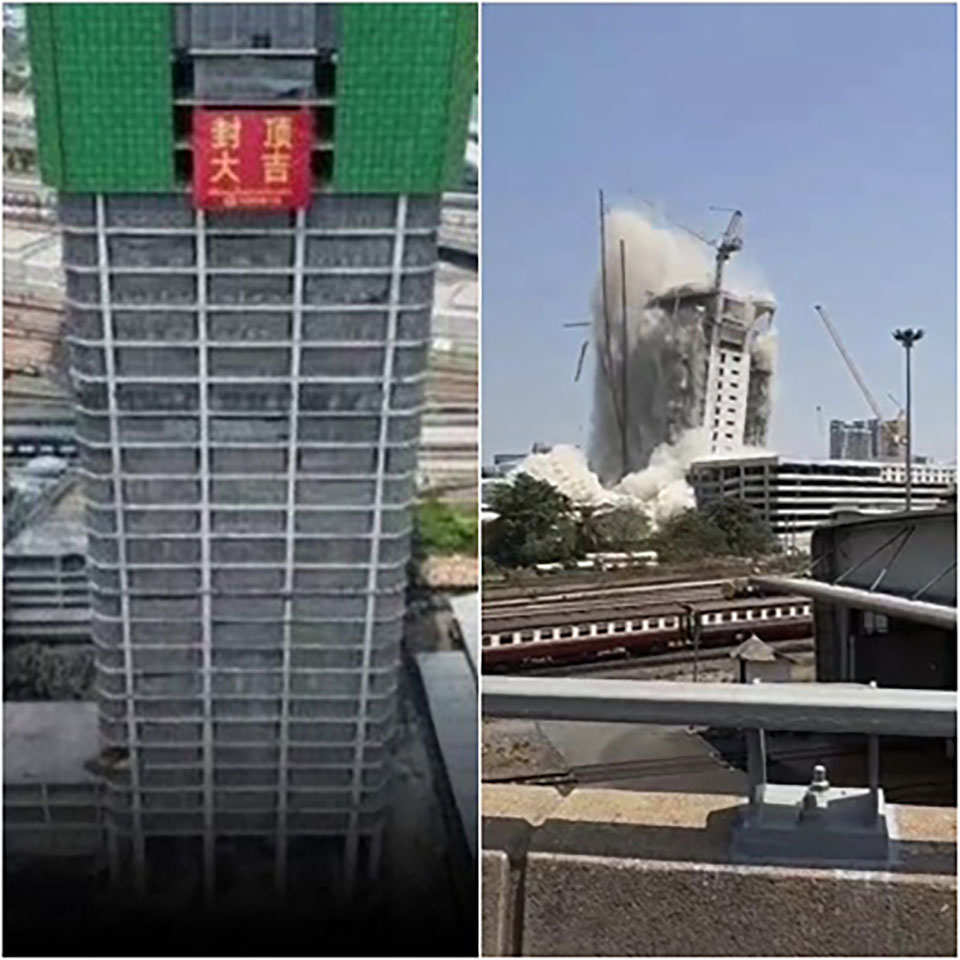
BANGKOK, Thailand – A powerful 8.2-magnitude earthquake struck Myanmar, triggering multiple aftershocks on March 28. The tremors affected parts of Thailand and southern China, particularly Yunnan province. In Thailand, the earthquake led to significant damage, most notably the collapse of the newly constructed Office of the State Audit Office building in Bangkok. The 30-story structure, valued at over 2.136 billion baht, was developed as a joint venture between Italian-Thai Development PCL (ITD) and China Railway No. 10 (Thailand) Co., Ltd.
The new SAO complex was located in Bangkok, consisting of a main office building, conference rooms, and a parking structure, with a total construction area of 96,041 square meters. It was situated near a railway station and a public park.
The collapse of the building sparked widespread discussion on social media, particularly in China, where the topic quickly gained traction on Weibo and became a trending issue. Many Chinese netizens questioned the structural integrity of the building, noting its collaboration with a Chinese construction firm. Some users pointed out that the building featured a “beamless slab” design, which relies on columns for support rather than traditional beams. They argued that this structural choice made the building less resistant to earthquakes compared to conventional designs, suggesting that the collapse could be directly linked to its architectural framework.
One widely shared post included a report detailing the building’s specifications, stating that the main structure stood 137 meters tall and was designed with a core tube system, slip-form central columns, and a climbing framework for external construction. The project had also established a technical research team during the early stages to assess the feasibility of construction techniques for high-rise concrete buildings. Despite these measures, the building failed to withstand the earthquake’s impact.
The online criticism extended beyond the building, with some Chinese users referencing other recent infrastructure failures involving Chinese construction firms. Some remarked that a collapsed bridge in Myanmar was also built by a Chinese company, fueling concerns over construction quality. Others sarcastically commented, “It has begun, hasn’t it?” in response to the disaster.
The discussion was not limited to Chinese social media. A Japanese user on Twitter shared a video of the collapsed building, warning of a major earthquake in Thailand. The post attracted further attention when a comment written in Chinese simply stated, “Made in China,” seemingly attributing the collapse to the involvement of the Chinese construction firm.
The incident has raised serious concerns over the safety standards and structural integrity of the collapsed building, as well as broader questions about the accountability of international construction projects in earthquake-prone regions.










